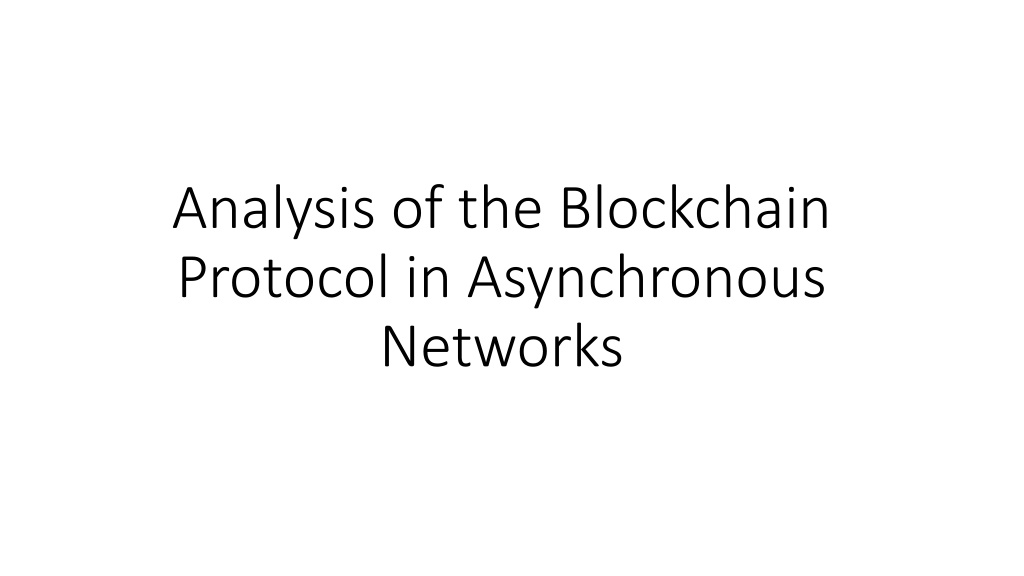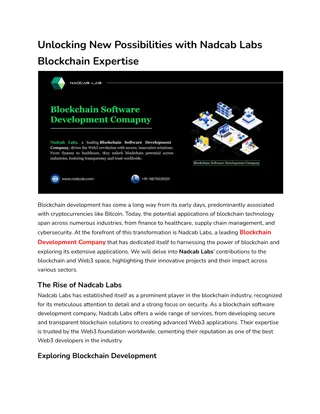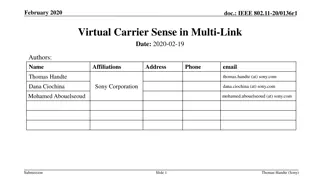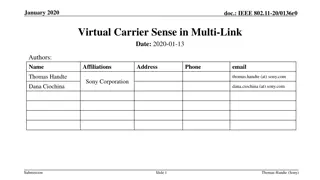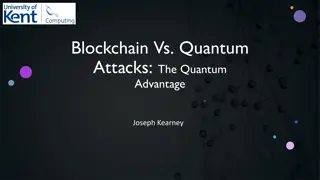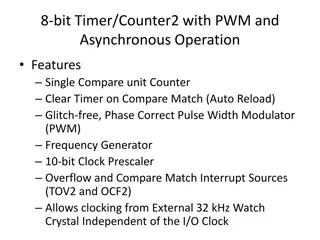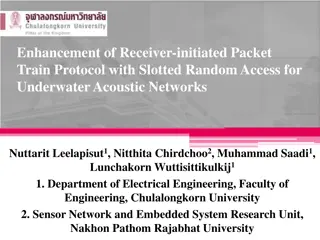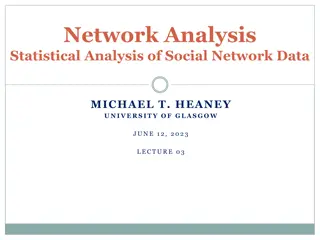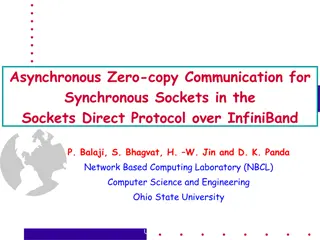Analysis of Blockchain Protocol in Asynchronous Networks
This paper examines the security and properties of blockchain protocols in asynchronous networks, particularly focusing on Bitcoin. It discusses how adversaries with different computational power can influence the system and outlines desired properties such as consistency, persistency, and liveness. The paper also explores the mechanisms of Nakamoto consensus and how it ensures protocol security through adjustments in mining difficulty.
Download Presentation

Please find below an Image/Link to download the presentation.
The content on the website is provided AS IS for your information and personal use only. It may not be sold, licensed, or shared on other websites without obtaining consent from the author. Download presentation by click this link. If you encounter any issues during the download, it is possible that the publisher has removed the file from their server.
E N D
Presentation Transcript
Analysis of the Blockchain Protocol in Asynchronous Networks
Intro The paper starts by analyzing the security of bitcoin. In a completely asynchronous setting where the adversary can delay messages indefinetly security is always lost. Additionally, in a max delay system the security is lost if the mining difficulty is less than 1/adversary power*peers*max delay.
Their analysis They assume rounds much like ours and a constant mining probability Adversaries with more computation power just try multiple times They assume bounded delays
Properties persistency (namely, if a message gets added to the public ledger, it never gets removed) liveness (that is, if all honest players want to add a some message to the ledger, the message should eventually appear on it).
Desired Properties consistency: with overwhelming probability (in T), at any point, the chains of two honest players can differ only in the last T blocks; future self-consistence: with overwhelming probability (in T), at any two points r, s the chains of any honest player at r and s differ only within the last T blocks; g-chain-growth: with overwhelming probability (in T), at any point in the execution, the chain of honest players grows by at least T messages in the last T/g rounds; g is called the chain-growth of the protocol. the -chain quality with overwhelming probability (in T), for any T consecutive messages in any chain held by some honest player, the fraction of messages that were contributed by honest players is at least
Using these properties they prove nakamoto consensus is secure as long as the mining difficulty is greater than 1/adversary power*peers*max delay The bitcoin protocol recalibrates the mining hardness parameter every 2016 blocks (roughly 2 weeks) based on the time it took to find 2016 blocks This allows them to roughly estimate the number of peers and thus keep the protocol secure to adversary power
Proving consistency They prove consistency even with adversaries by showing that 3 events will eventually follow each other. First, there will be a set of rounds >= to the max delay where no one mines a block. Second, in a set of rounds >= the max delay only one peer will mine a block. Third, there will be a set of rounds >= to the max delay where no one mines a block. At the end of 1 there may be a tie. With all three all peers chains match
